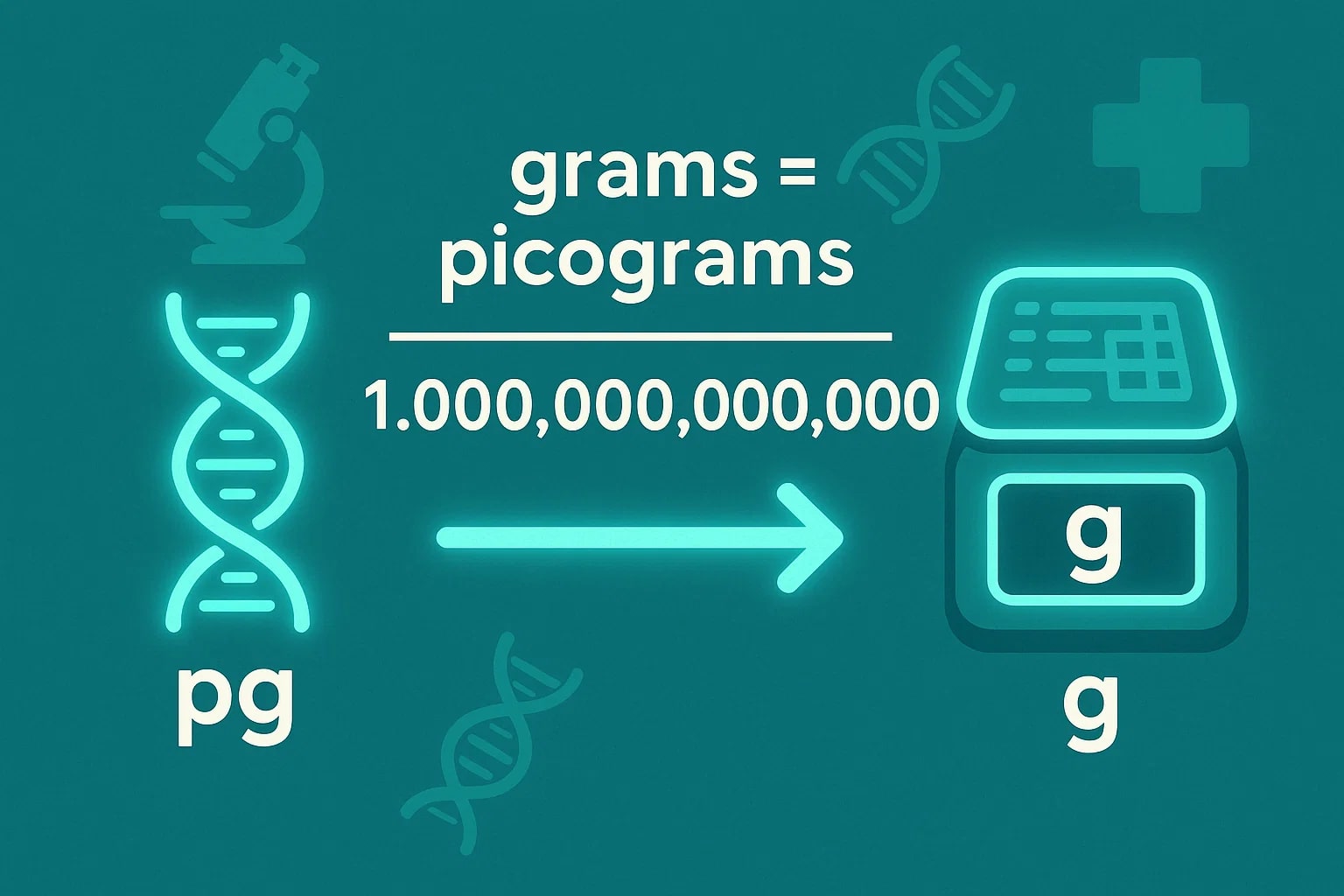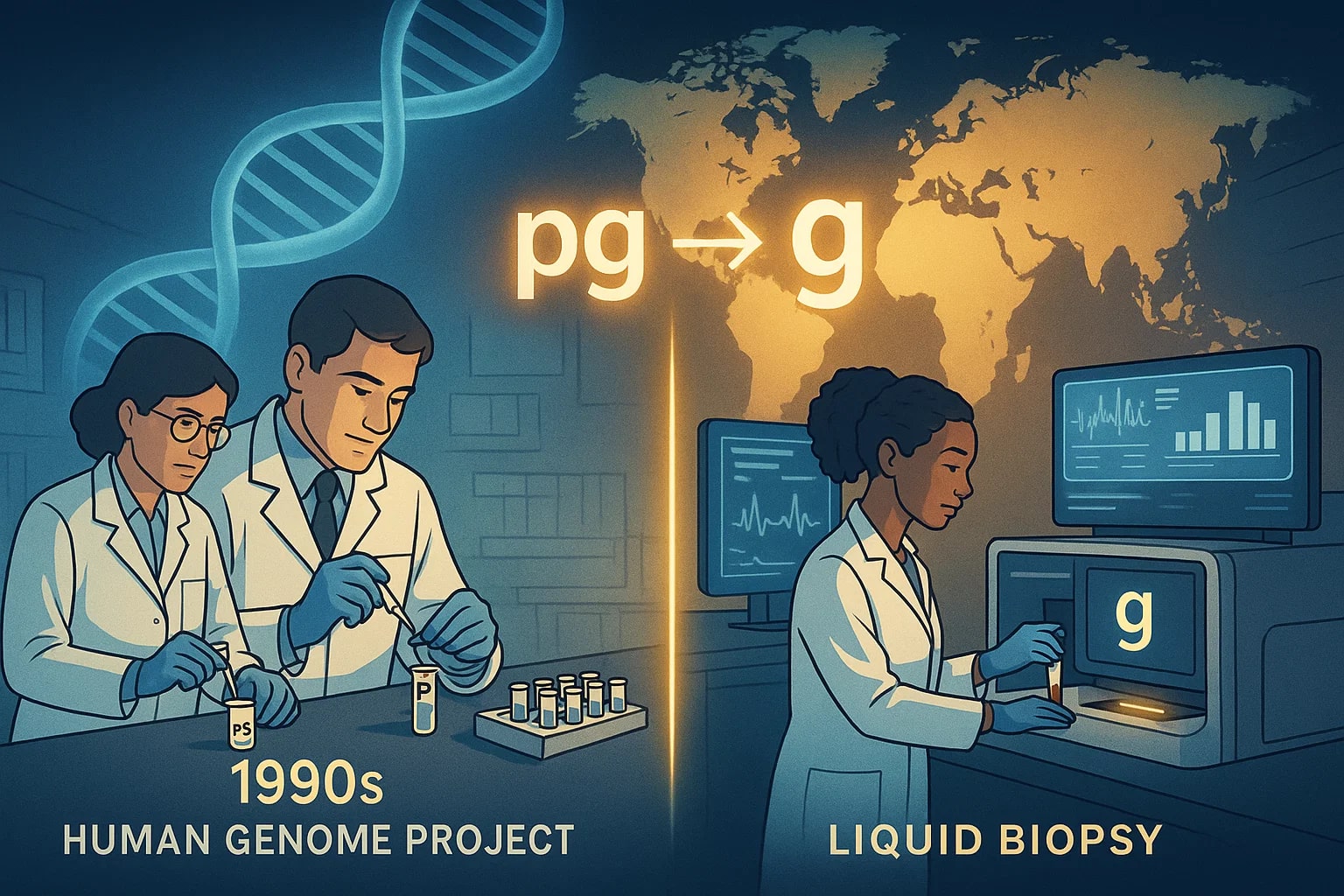picogram to microgram – How to convert pg to μg
When working at the smallest scales of biology and chemistry, the conversion between picograms and micrograms is essential. A picogram (pg) equals 0.000001 microgram (μg). This relationship is common in genetic research, toxicology, and advanced diagnostics where minuscule measurements have enormous impact.
What is a picogram (pg)?
The picogram (pg) is a metric unit equal to one-trillionth of a gram. The prefix “pico-” means one-trillionth, so 1 pg = 1 × 10⁻¹² g. It’s widely used in molecular biology and medical diagnostics.
For perspective, a single human cell contains about 6 pg of DNA, meaning even a nanogram of DNA holds enough material from more than 150 cells.
What is a microgram (μg)?
The microgram (μg) is a metric unit equal to one-millionth of a gram. The prefix “micro-” means one-millionth, so 1 μg = 1 × 10⁻⁶ g. Micrograms are standard in medicine, toxicology, and nutrition for precise dosage.
For example, an adult requires only about 2.4 μg of vitamin B12 per day — equivalent to 2 400 000 pg.
Conversion Formula
The conversion between picograms and micrograms is straightforward:
1 pg = 0.000001 μg
For example:
750 000 pg × 0.000001 = 0.75 μg

Do you know?
-
In cancer diagnostics, liquid biopsy tests can identify tumor DNA fragments in blood at levels below 500 pg per milliliter, later reported in micrograms for clinical readability.
-
Airborne allergens like pollen proteins may circulate at 50 pg per cubic meter, yet official safety thresholds are published in micrograms per cubic meter.
-
In environmental research, pesticide residues can appear on crops in picograms per gram, but regulations communicate limits in μg to simplify reporting.
-
Advanced drug tests in anti-doping labs can detect performance enhancers at 10 pg, while results are expressed in μg for international standardization.
From Space Dust to Cancer Screening: The pg–μg Link
One fascinating story of pg-to-μg precision comes from cosmic dust research. NASA missions have captured interstellar particles smaller than a grain of sand, with samples weighing mere picograms. In laboratories, scientists convert these readings into micrograms to catalog, analyze, and preserve them.
This same sensitivity is transforming healthcare. In oncology, doctors can detect picogram fragments of tumor DNA in blood and translate them into microgram-level datasets that guide personalized treatment. The conversion from pg to μg is more than just arithmetic — it allows breakthroughs in fields as vast as astronomy and as personal as medicine.

Measuring the Invisible
Every 1 pg equals 0.000001 μg. This conversion connects life’s smallest building blocks with clinical and scientific practice, proving that even the tiniest measurements can fuel some of humanity’s biggest discoveries.
For precise results, try our Weight Converter or explore all our Conversion Tools to manage any measurement, from the microscopic to the everyday.

